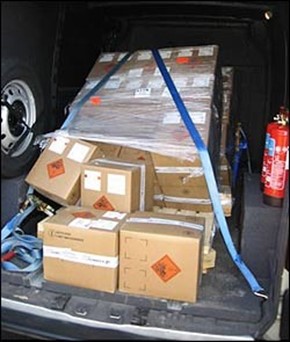Vehicle Loading Considerations
Activities in and on or around vehicles are always more likely to become the centre for an accident as opposed to the function of driving. Despite this, many managers and supervisory staff it is said often pay less attention to the aspect of loading/unloading of their vehicles and equally so the security of the load within.
The Road Traffic Act 1991 Introduced provisions into the Road Traffic Act 1988 making new offences, applicable to the state of loads on vehicles. These provisions reflect the seriousness with which the safety of loads on vehicles is now viewed, with the areas coming under intense scrutiny being:
- Security of the load on the vehicle
- Risk assessments of the loading/unloading process
- Training of all warehouse/driving staff in all aspects of loading/unloading and storage
- Training of all warehouse/driving staff in the correct use of load restraints and securing devices
- Driver training on the security of the load during transit
Some of the measures introduced through the Road Traffic Act 1991 concern the Code of Practice not only to the load being carried by the vehicle, but also any equipment on the vehicle such as restraining devices including bars 'n cleats and ratchet straps, also loader cranes, landing legs and tail lifts etc. All of these items are required to be used, stowed and secured to manufacturer instructions so as not to be a danger to other road users and pedestrians.
In the UK every year over 4,000 successful prosecutions for unsafe loads are brought against drivers and operators. Many other incidents involving the loss of loads or part loads go unreported.
The Road Traffic Act 1991 states that:
- A person is also guilty of using a vehicle in a dangerous condition if he/she uses, or causes or permits another to use, a motor vehicle or trailer on a road when the purpose for which it is used or the weight position or distribution of its load, or the manner in which it is secured is such that the use of the motor vehicle or trailer involves a danger of injury to any person.
The maximum penalty for this offence if committed in respect of a goods vehicle is £5,000, plus 3 penalty points and disqualification.
A person is to be regarded as driving dangerously if it would be obvious to a competent and careful driver that driving the vehicle in its current state would be dangerous. In determining the state of the vehicle for this purpose, regard may be had to anything attached to or carried on or in it and to the manner in which it is attached or carried.
- The maximum penalty for Dangerous Driving is 2 years imprisonment.
- The maximum penalty for causing Death by Dangerous Driving is 14 years imprisonment.
If a load, or part of a load, falls into the water and causes pollution, and the waters are controlled, this is an offence under the Water Resources Act 1991. This could attract a maximum fine of £20,000 together with the cost of cleaning up the affected water.
Although this document is primarily concerned with ensuring that loads are contained on vehicles, you should be aware that there are legal obligations on operators and others to ensure the safety of all persons involved in loading operations. These obligations expect safe systems of work for loading, moving, unloading, sheeting and safe access onto vehicles.
Poor Stowage
In the image below it should be noted that the upper cylinders are free to move or be dislodged by cornering or braking forces.

In the image below it can be seen what can go wrong if stowage is not compliant.

Source - HSE
Safe working practices within the UK are enforced by the Health and Safety Executive. To further assist you in ensuring that your operation complies in all respects to working practices conducive to the safety and wellbeing of your staff, other road users and the general public, please use the links below for further information.
The following should assist in giving guidance and further information, please use the links below.
Workplace Transport Safety - HSE
Load Security: Vehicle Operator Guidance (DVSA: 21 December 2019)
https://www.gov.uk/government/publications/load-securing-vehicle-operator-guidance/load-securing-vehicle-operator-guidance
Safety Loads on Vehicles (Code of Practice 3rd Edition- 2002) – Department for Transport
Cargo Securing for Road Transport – EU Publication (2014)